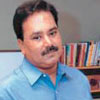Who's next?

A few days after Malvinder Singh announced that he was selling his family’s stake in Ranbaxy Laboratories to Daiichi Sankyo, Dr Anji Reddy, founder and Chairman of the eponymous drug company in Hyderabad, wrote a longish piece on the edit page of a business daily saying why his own family would never consider selling its stake in Dr Reddy’s Labs. “A deal of this kind is unthinkable for my company… my family is fully aware that my excitement is only in drug discovery. We will build our company based on generic opportunities in the short run.”

The Singhs of Ranbaxy are hardly the first business family to sell out. For example, the Sekhsarias of Gujarat Ambuja gave up control to Holcim, and even in pharma, N. Prasad, who founded Matrix Laboratories, cashed out in a 2006 sale to Mylan Laboratories. “I am a great believer in the view that wealth has to be unlocked or else it remains only on paper,” says Prasad.
Changing times

Big Pharma needs a wonder drug to battle its blues. Awaiting one, it is building presence in generics. Novartis was the first innovator company to spin off (in 2003) its generics business into Sandoz and to grow it consistently ever since. Here’s the interesting thing, though: As Big Pharma brings its crushing heft—everywhere from the marketplace to court rooms—to the battle, the smaller rivals are realising that the going ahead will only get more bruising. “Consolidation is taking place globally and this (Ranbaxy-Daiichi-like deal) is no more a choice but a compulsion,” says Prasad.
That leads to the question, after Ranbaxy who? Promoters are swearing that they are not selling out yet. “It’s not on the cards,” says G. V. Prasad, Vice Chairman and CEO of Dr Reddy’s, “the two cases (Ranbaxy and Dr Reddy’s) cannot be compared”, but the pressure to take the bait is intense. Indian drug makers that are vertically integrated—that is, they manufacture everything from bulk drugs to finished dosages with R&D thrown in between—are attractive targets.
Evidently, Indian promoters are emotionally attached to their companies and their causes. But Malvinder Singh has proved that there’s a point at which logic overtakes emotion. Ranbaxy has reached that point. Other Indian drug makers may too in the years ahead.











